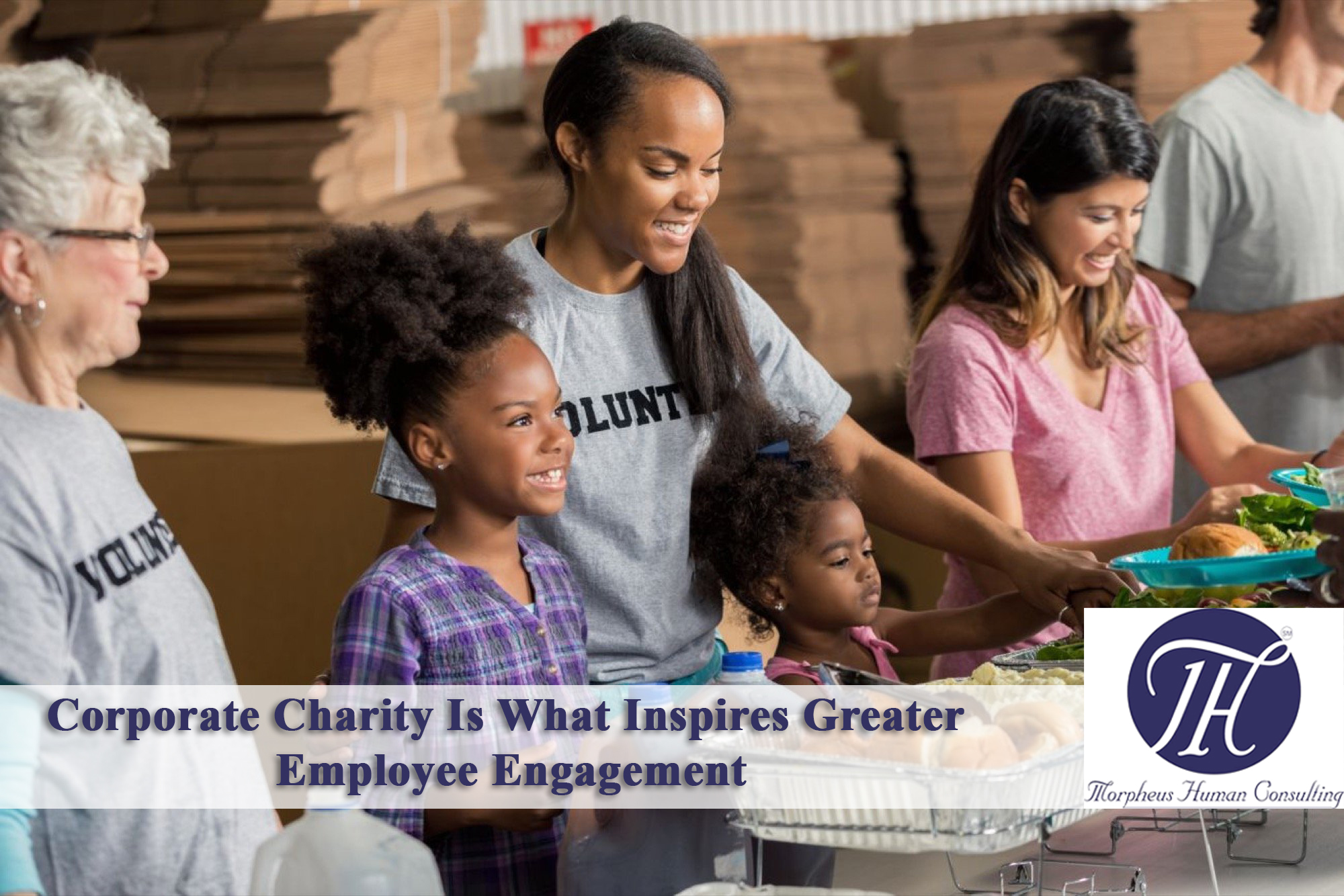Corporate Charity Is What Inspires Greater Employee Engagement

Corporate giving totaled $18.55 billion in 2016, increasing 3.5 percent from the previous year. Many charitable groups benefit from those surplus dollars, from food banks to homeless shelters to medical organizations. Few people would question the outside benefits of office giving, but as an employee-centric organization, we were curious whether corporate charity has a positive influence on how someone feels about their workplace.
According to a recent survey over 1,000 employees at companies across the U.S. were performed to understand how they perceive corporate charitable giving. The responses were encouraging and instructive as to how employees feel about their charitable companies:
Corporate giving improves company culture.
Of all the buzzwords circulating among HR professionals, the buzziest right now is “culture.” Although improving culture means different things in different industries, one key for any company is helping employees feel connected to an organization. Charitable giving is an opportunity for companies to reinforce their purpose — their greater cause, beyond just products and services — and help employees connect to that purpose.
Corporate Philanthropy: It’s Not Just Money That Changes The World
Charitable giving is rarely a key focus for any company, but organizing and promoting charitable events among employees results in significantly improved employee engagement. When asked if their organization has a clear purpose, respondents who answered “yes” jumped from 62 percent for companies that don’t organize holiday charitable events, to 84 percent for companies that offer multiple holiday charity events — a leap of 22 percentage points for a program generally unrelated to corporate vision or mission statements.
In organizing and offering charitable opportunities for employees, companies can create strong traditions, which promote a sense of pride and ownership among employees. For example, O.C. Tanner assembles turkey dinner boxes for a local organization during the holiday season. Participation is always voluntary and open to every employee. We have done it for a few years now, and it has become a tradition that people eagerly anticipate.
When employees participate in holiday giving, they will more fully buy in to their organization’s values. According to our survey, seventy-eight percent of employees who are provided multiple charitable opportunities express support for their company’s values, a significant increase from only 50 percent of employees at companies that do not have holiday charitable events. The data is clear: companies that want to improve their culture should be organizing charitable opportunities for their employees, particularly around the holidays.
A majority of companies do it, but there is room for improvement.
Charitable giving has been a part of the workplace for decades, and our results found that a majority of companies organize charitable events for their employees. However, it was a slim majority — just over half provide opportunities for holiday giving and service.
Around 15 percent of companies organized a single event, which was broadly categorized as anything from “Sub for Santa” to group volunteering at a homeless shelter. One positive trend was a greater number of companies holding multiple events (36 percent) than companies that did nothing at all (29 percent).
The 20 percent of respondents who were unsure if their company organized charitable events during the holidays could represent an opportunity. While much of the result is probably chalked up to lower employee engagement in one form or another, there may also be a disconnect with how companies communicate these opportunities to their teams.
Even companies that have those traditions of charitable giving can find ways to improve, and in so doing, help their employees feel more connected. The rewards in work culture and employee engagement are incredible.
Workers are happier when they work for generous companies.
There is ample research indicating that happier, more engaged employees benefit the company in a broad variety of ways, including increased productivity, better relationships with supervisors and improved corporate growth. For those leaders who must focus on profit and loss statements, yes, happier employees even benefit the bottom line.
Among respondents asked specifically about charitable events, 37 percent felt more connected to their company culture when they had opportunity to participate in charitable events. The perceived impact on morale was even stronger: 57 percent of respondents believed the charitable events made for happier teams.
There is a simple formula for meaningful corporate charity communicate the programs to employees, put a little money and importance behind it, and then give opportunities for people to get involved. Companies see the best of both worlds when they do that.
The communication element can be easily overlooked, but is one of the most critical. Communication should present various opportunities to participate, and also includes sharing the results and benefits, afterward. Together these help develop a sense of pride, ownership and connection in understanding what the company and their employees have done together.
As more companies focus on building culture and increasing employee appreciation, they should consider frequently turning their focus outward. By providing an opportunity to help others as an element of employment, organizations can build value and purpose for their teams.